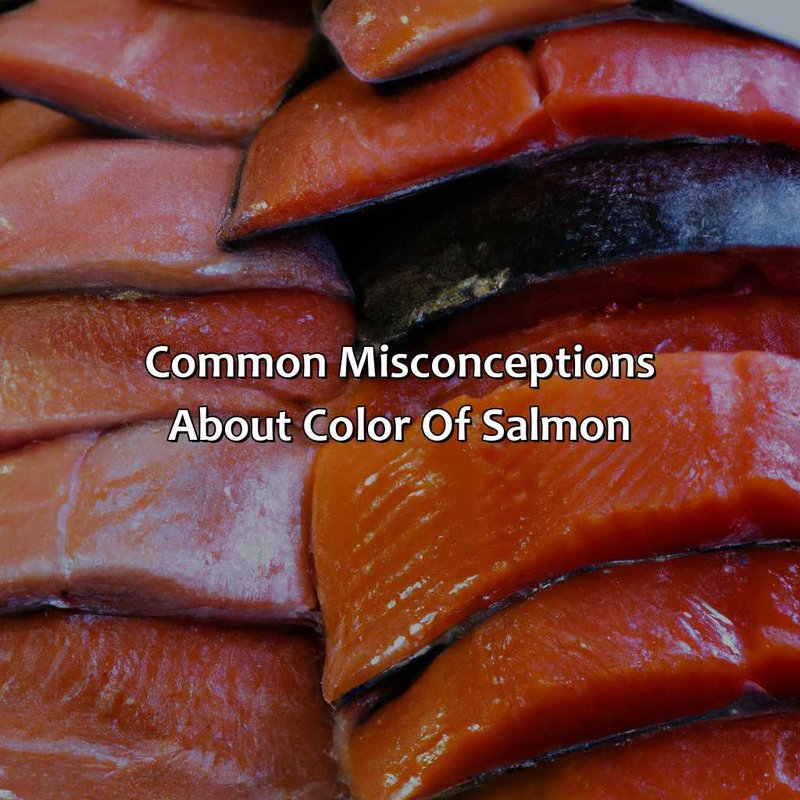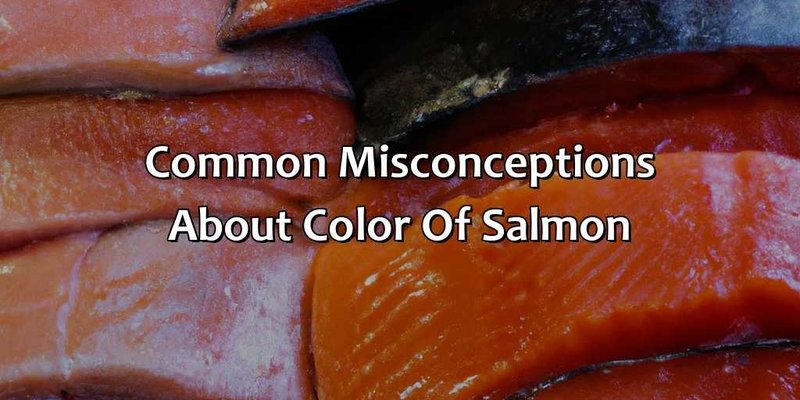
Imagine trying to navigate a river filled with facts and fiction about this popular fish. It’s easy to get lost! In this article, we’ll set the record straight about some common myths and misconceptions about salmon. From the types of salmon to their life cycle and health benefits, let’s dive in and clear the waters.
Myth 1: All Salmon Are the Same
You might think that all salmon are just variations of the same fish. But here’s the thing: there are several different species of salmon, each with its own unique traits. The most well-known types include Atlantic salmon and Pacific salmon, which includes species like Chinook, Coho, and Sockeye. These fish vary not only in taste and texture but also in habitat and behavior.
For example, Chinook salmon are known for their rich flavor and high oil content, making them a favorite among chefs. On the other hand, Sockeye salmon has a more robust taste and firm texture, which is a hit in canning and smoking. Each type of salmon has its own story, and knowing the difference can help you appreciate this fish even more.
Also, let’s not forget about the nutritional differences. Different salmon species can have varying levels of omega-3 fatty acids, which are great for your heart. So, when you pick up salmon at the store, think about what flavor and nutritional profile you’re after!
Myth 2: Wild Salmon is Always Better Than Farmed Salmon
Many people believe that wild-caught salmon is always the superior choice. While it’s true that wild salmon often has a stronger flavor and a more vibrant color, farm-raised salmon has its own advantages. For one, it can be more sustainable and easier to find year-round. Farmed salmon is produced in a controlled environment, which can lead to a more consistent product.
Let me explain further. *Wild salmon* can be affected by environmental factors like water temperature and food availability, which can influence its taste and fat content. Conversely, *farmed salmon* is fed a monitored diet, which helps maintain its quality. Plus, many salmon farms are making strides toward sustainable practices, reducing the environmental impact.
So, while there’s certainly a place for wild salmon in your diet, don’t shy away from farmed options. The key is to look for responsibly farmed salmon that prioritizes sustainable practices.
Myth 3: Salmon Always Swim Upstream to Spawn
The image of salmon leaping upstream to spawn is iconic, but it doesn’t tell the whole story. While many salmon species do indeed swim upstream, it’s more about their life cycle than a strict rule. Salmon hatch in freshwater, migrate to the ocean, and then return to their birth rivers to reproduce. However, not all salmon will travel long distances.
Some salmon populations are influenced by environmental conditions or genetic factors that may lead them to spawn in various habitats, including estuaries or even lakes. This means that while they are known for their upstream journeys, not every salmon makes that trek.
Understanding the salmon’s life cycle is crucial for appreciating their resilience. They face various challenges, from natural predators to changing water conditions, all while navigating thousands of miles to ensure the survival of their species.
Myth 4: Salmon Are Born Pink
If you’ve ever seen a fresh piece of salmon fillet, you might think all salmon is born with that pretty pink hue. Surprise! Fresh salmon starts off much paler. The vibrant color we love in salmon comes from their diet, particularly when they consume certain crustaceans rich in carotenoids.
In the wild, a diet heavy in krill and shrimp contributes to that beautiful pink, orange, or red shade we associate with salmon. Farmed salmon can have their diets supplemented with pigments to achieve the desired coloration. So, next time you enjoy salmon, remember that its color tells a story about what it eats!
Myth 5: Eating Salmon is Always Healthy
Salmon is often labeled as a superfood, and for good reason. It’s packed with omega-3 fatty acids, protein, and essential vitamins. But here’s the catch—like all good things, moderation is key.
Some salmon can be high in contaminants, such as mercury, especially larger species or those caught in polluted waters. While the health benefits of salmon are significant, being mindful of where your fish comes from is essential. Opting for wild-caught or sustainably farmed salmon can help minimize exposure to harmful substances.
When including salmon in your diet, balance it out with a variety of other protein sources and veggies. This way, you can enjoy its benefits without overdoing it on any potential risks.
Myth 6: Salmon Is Only for Special Occasions
Many folks think of salmon as fancy dinner food, perfect for special occasions. But let me tell you, salmon can be a weeknight hero! It’s surprisingly easy to cook, versatile, and can elevate any meal, even a quick weekday dinner.
You can grill, bake, or pan-sear salmon in just a matter of minutes. Pair it with some vegetables or toss it into a salad, and boom—you’ve got a nutritious and delicious meal ready in no time. Plus, it’s an excellent source of protein, making it a perfect choice for busy families looking to eat healthier without spending hours in the kitchen.
With the right spices or sauces, you can enjoy salmon in different flavors and styles. So don’t save it just for special occasions—bring it into your regular meal rotation!
Myth 7: Salmon is a Freshwater Fish
You might think salmon is primarily a freshwater fish, given that they return to freshwater rivers to spawn. However, they are actually classified as anadromous, meaning they live in both freshwater and saltwater during their life cycle.
Salmon hatch in rivers and streams before migrating to the ocean, where they spend most of their adult life. They can travel hundreds or even thousands of miles in saltwater before returning to freshwater to spawn. This unique lifestyle allows them to thrive in different environments and showcases their adaptability.
Understanding this dual habitat helps us appreciate the salmon’s journey, which is crucial for their survival as species and for maintaining the ecosystems they inhabit.
Myth 8: Salmon is Too Expensive for Everyday Meals
Many people see salmon as a luxury item due to its price, but there are ways to enjoy it without breaking the bank. Prices can vary based on the type of salmon and where it’s sourced from, but shopping smart can help. Look for sales or discounts on frozen salmon, which can be just as nutritious as fresh options.
Consider buying canned salmon, too. It’s budget-friendly and can be a convenient option for quick meals. You can toss it into salads, make salmon cakes, or mix it with pasta for an easy dinner.
Incorporating salmon into your diet doesn’t have to feel like a treat only reserved for special gatherings. With a little creativity, you can enjoy its benefits more frequently.
In conclusion, as we wrap up our exploration of salmon myths, it’s clear that this incredible fish has garnered both admiration and confusion. By debunking these misconceptions, we can appreciate salmon even more for what it truly is—a diverse, adaptable, and nutritious food option. Whether you prefer wild or farmed, grilled or baked, salmon can be a delightful addition to your meals. So the next time you see salmon on the menu or at the grocery store, remember these facts, and enjoy the fish for all its worth!

